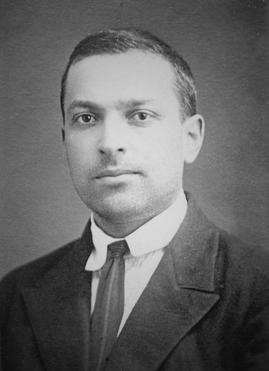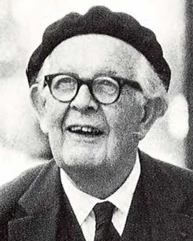Related Research Articles

Developmental psychology is the scientific study of how and why humans grow, change, and adapt across the course of their lives. Originally concerned with infants and children, the field has expanded to include adolescence, adult development, aging, and the entire lifespan. Developmental psychologists aim to explain how thinking, feeling, and behaviors change throughout life. This field examines change across three major dimensions, which are physical development, cognitive development, and social emotional development. Within these three dimensions are a broad range of topics including motor skills, executive functions, moral understanding, language acquisition, social change, personality, emotional development, self-concept, and identity formation.
Educational psychology is the branch of psychology concerned with the scientific study of human learning. The study of learning processes, from both cognitive and behavioral perspectives, allows researchers to understand individual differences in intelligence, cognitive development, affect, motivation, self-regulation, and self-concept, as well as their role in learning. The field of educational psychology relies heavily on quantitative methods, including testing and measurement, to enhance educational activities related to instructional design, classroom management, and assessment, which serve to facilitate learning processes in various educational settings across the lifespan.

Lev Semyonovich Vygotsky was a Russian psychologist, best known for his work on psychological development in children and creating the framework known as cultural-historical activity theory. After his early death, his books and research were banned in the Soviet Union until Joseph Stalin's death in 1953, with a first collection of major texts published in 1956.

Jean William Fritz Piaget was a Swiss psychologist known for his work on child development. Piaget's theory of cognitive development and epistemological view are together called genetic epistemology.

Intrapersonal communication is communication with oneself or self-to-self communication. Examples are thinking to oneself "I will do better next time" after having made a mistake or imagining a conversation with one's boss in preparation for leaving work early. It is often understood as an exchange of messages in which the sender and the receiver is the same person. Some theorists use a wider definition that goes beyond message-based accounts and focuses on the role of meaning and making sense of things. Intrapersonal communication can happen alone or in social situations. It may be prompted internally or occur as a response to changes in the environment.
Instructional scaffolding is the support given to a student by an instructor throughout the learning process. This support is specifically tailored to each student; this instructional approach allows students to experience student-centered learning, which tends to facilitate more efficient learning than teacher-centered learning. This learning process promotes a deeper level of learning than many other common teaching strategies.

Early childhood education (ECE), also known as nursery education, is a branch of education theory that relates to the teaching of children from birth up to the age of eight. Traditionally, this is up to the equivalent of third grade. ECE is described as an important period in child development.
The psychology of learning refers to theories and research on how individuals learn. There are many theories of learning. Some take on a more behaviorist approach which focuses on inputs and reinforcements. Other approaches, such as neuroscience and social cognition, focus more on how the brain's organization and structure influence learning. Some psychological approaches, such as social constructivism, focus more on one's interaction with the environment and with others. Other theories, such as those related to motivation, like the growth mindset, focus more on individuals' perceptions of ability.

Piaget's theory of cognitive development, or his genetic epistemology, is a comprehensive theory about the nature and development of human intelligence. It was originated by the Swiss developmental psychologist Jean Piaget (1896–1980). The theory deals with the nature of knowledge itself and how humans gradually come to acquire, construct, and use it. Piaget's theory is mainly known as a developmental stage theory.
Cognitive development is a field of study in neuroscience and psychology focusing on a child's development in terms of information processing, conceptual resources, perceptual skill, language learning, and other aspects of the developed adult brain and cognitive psychology. Qualitative differences between how a child processes their waking experience and how an adult processes their waking experience are acknowledged. Cognitive development is defined as the emergence of the ability to consciously cognize, understand, and articulate their understanding in adult terms. Cognitive development is how a person perceives, thinks, and gains understanding of their world through the relations of genetic and learning factors. There are four stages to cognitive information development. They are, reasoning, intelligence, language, and memory. These stages start when the baby is about 18 months old, they play with toys, listen to their parents speak, they watch TV, anything that catches their attention helps build their cognitive development.
Egocentrism is the inability to differentiate between self and other. More specifically, it is the inability to accurately assume or understand any perspective other than one's own. Egocentrism is found across the life span: in infancy, early childhood, adolescence, and adulthood. Although egocentric behaviors are less prominent in adulthood, the existence of some forms of egocentrism in adulthood indicates that overcoming egocentrism may be a lifelong development that never achieves completion. Adults appear to be less egocentric than children because they are faster to correct from an initially egocentric perspective than children, not because they are less likely to initially adopt an egocentric perspective.
In psychology, centration is the tendency to focus on one salient aspect of a situation and neglect other, possibly relevant aspects. Introduced by the Swiss psychologist Jean Piaget through his cognitive-developmental stage theory, centration is a behaviour often demonstrated in the preoperational stage. Piaget claimed that egocentrism, a common element responsible for preoperational children's unsystematic thinking, was causal to centration. Research on centration has primarily been made by Piaget, shown through his conservation tasks, while contemporary researchers have expanded on his ideas.

The zone of proximal development (ZPD) is a concept in educational psychology. It represents the space between what a learner is capable of doing unsupported and what the learner cannot do even with support. It is the range where the learner is able to perform, but only with support from a teacher or a peer with more knowledge or expertise. The concept was introduced, but not fully developed, by psychologist Lev Vygotsky (1896–1934) during the last three years of his life. Vygotsky argued that a child gets involved in a dialogue with the "more knowledgeable other" such as a peer or an adult and gradually, through social interaction and sense-making, develops the ability to solve problems independently and do certain tasks without help. Following Vygotsky, some educators believe that the role of education is to give children experiences that are within their zones of proximal development, thereby encouraging and advancing their individual learning such as skills and strategies.

Child development involves the biological, psychological and emotional changes that occur in human beings between birth and the conclusion of adolescence.
Infant cognitive development is the first stage of human cognitive development, in the youngest children. The academic field of infant cognitive development studies of how psychological processes involved in thinking and knowing develop in young children. Information is acquired in a number of ways including through sight, sound, touch, taste, smell and language, all of which require processing by our cognitive system. However, cognition begins through social bonds between children and caregivers, which gradually increase through the essential motive force of Shared intentionality. The notion of Shared intentionality describes unaware processes during social learning at the onset of life when organisms in the simple reflexes substage of the sensorimotor stage of cognitive development do not maintain communication via the sensory system.
Learning through play is a term used in education and psychology to describe how a child can learn to make sense of the world around them. Through play children can develop social and cognitive skills, mature emotionally, and gain the self-confidence required to engage in new experiences and environments.

Childhood memory refers to memories formed during childhood. Among its other roles, memory functions to guide present behaviour and to predict future outcomes. Memory in childhood is qualitatively and quantitatively different from the memories formed and retrieved in late adolescence and the adult years. Childhood memory research is relatively recent in relation to the study of other types of cognitive processes underpinning behaviour. Understanding the mechanisms by which memories in childhood are encoded and later retrieved has important implications in many areas. Research into childhood memory includes topics such as childhood memory formation and retrieval mechanisms in relation to those in adults, controversies surrounding infantile amnesia and the fact that adults have relatively poor memories of early childhood, the ways in which school environment and family environment influence memory, and the ways in which memory can be improved in childhood to improve overall cognition, performance in school, and well-being, both in childhood and in adulthood.
In the framework of the Cultural-Historical Activity Theory (CHAT) the leading activity is the activity, or cooperative human action, which plays the most essential role in child development during a given developmental period. Although many activities may play a role in a child's development at any given time, the leading activity is theorized to be the type of social interaction that is most beneficial in terms of producing major developmental accomplishments, and preparing the child for the next period of development. Through engaging in leading activities, a child develops a wide range of capabilities, including emotional connection with others, motivation to engage in more complex social activities, the creation of new cognitive abilities, and the restructuring of old ones.
The Three Mountains Task was a task developed by Jean Piaget, a developmental psychologist from Switzerland. Piaget came up with a theory for developmental psychology based on cognitive development. Cognitive development, according to his theory, took place in four stages. These four stages were classified as the sensorimotor, preoperational, concrete operational and formal operational stages. The Three Mountain Problem was devised by Piaget to test whether a child's thinking was egocentric, which was also a helpful indicator of whether the child was in the preoperational stage or the concrete operational stage of cognitive development.
Adam Winsler is a developmental psychologist known for his research on early child development, private speech, and benefits of arts education. Winsler is Professor of Applied Developmental Psychology at George Mason University.
References
- 1 2 3 4 5 Manning, B. H. (1991). Cognitive self-instruction for classroom processes . State University of New York Press. ISBN 0-471-92573-X.
- 1 2 3 4 5 6 7 8 9 10 11 12 13 14 15 16 17 18 19 Vygotsky, L. S. (1986). Thought and language (A. Kozulin, Trans.). The MIT Press. ISBN 0-262-72010-8.
- 1 2 3 4 5 6 7 8 9 Winsler, A.; Diaz, R. M.; Montero, I. (1997). "The role of private speech in the transition from collaborative to independent task performance in young children". Early Childhood Research Quarterly. 12: 59–79. doi:10.1016/S0885-2006(97)90043-0.
- 1 2 Piaget, J (1959). The language and thought of the child. Psychology Press. ISBN 0-415-26750-1.
- ↑ White, C. S.; Manning, B. H. (1994). "The effects of verbal scaffolding instruction on young children's private speech and problem- solving capabilities". Instructional Science. 22: 39–59. doi:10.1007/BF00889522. S2CID 145447942.
- ↑ Deniz, C. B. (2001a, April). History of research methods in private speech. Session presented at the annual meeting of the National Council on Measurement and Evaluation, Seattle, WA.
- ↑ Azmitia, M. (1992). Diaz, R.M.; Berk, L. E. (eds.). Private speech: From social interaction to self-regulation. Hillsdale, NJ: Erlbaum. pp. 101–122. ISBN 0-8058-0886-8.
- ↑ Bivens, J. A., & Berk, L. E. (1990). A longitudinal study of the development of elementary school children's private speech. Merrill Palmer Quarterly, 36, 443-463.
- ↑ Lee, J. (1999). The effects of 5-year-old preschoolers' use of private speech on performance and attention for two kinds of problem solving tasks. Dissertation Abstracts International, 60, 06A. (UMI No. AAG99-32671) https://www.researchgate.net/publication/292089848_The_effects_of_five-year-old_preschoolers'_use_of_private_speech_on_performance_and_attention_for_two_kinds_of_problems-solving_tasks
- ↑ Kohlberg, Lawrence; Yaeger, Judy; Hjertholm, Else (1968). "Private Speech: Four Studies and a Review of Theories". Child Development . 39 (3): 691–736. doi:10.2307/1126979. ISSN 1467-8624. JSTOR 1126979. PMID 5687321.
- 1 2 3 4 5 6 7 8 9 Agres, J. (2012, September 29). Why do children talk to themselves? Retrieved from http://cla.calpoly.edu/~jbattenb/Papers/agres.html Archived 2015-05-15 at the Wayback Machine .
- 1 2 3 4 5 6 7 8 9 10 Winsler, A.; Fernyhough, C.; Montero, I. (2009). Private Speech, Executive Functioning, and the Development of Verbal Self-regulation. Cambridge University Press. ISBN 978-0-521-86607-1.
- ↑ Berk, L. E. (1999). "Children's Private Speech: An Overview of Theory and the Status of Research". In Lloyd, P (ed.). Critical Assessments: Thought and Language, Vol. II. Taylor & Frances/Routledge. pp. 33–70. ISBN 0-415-11153-6.
- ↑ Gholami, M.; Salehi, N.; Azizi, E.; Fazli, B. (2016). "Private speech and cognitive development: A review of the two theories" (PDF).
- 1 2 Duncan, Robert M.; Cheyne, J. Allan (1999). "Incidence and Functions of Self-Reported Private Speech in Young Adults: A Self-Verbalization Questionnaire". Canadian Journal of Behavioural Science. 31 (2): 133–136. doi:10.1037/h0087081.
- ↑ Jackson, Eric S.; Miller, Lindsay R.; Warner, Haley J.; Yaruss, J. Scott (2021). "Adults Who Stutter Do Not Stutter During Private Speech". Journal of Fluency Disorders. 70: 105878. doi:10.1016/j.jfludis.2021.105878. PMC 8629878 . PMID 34534899.